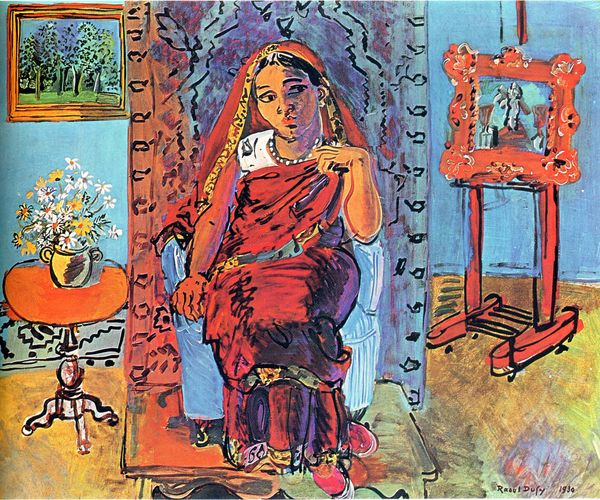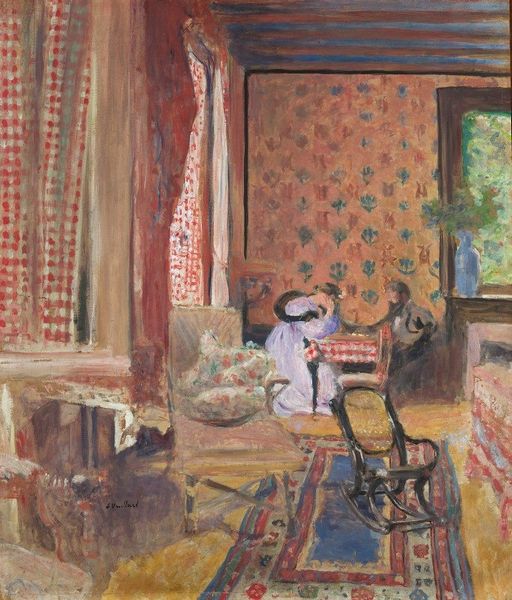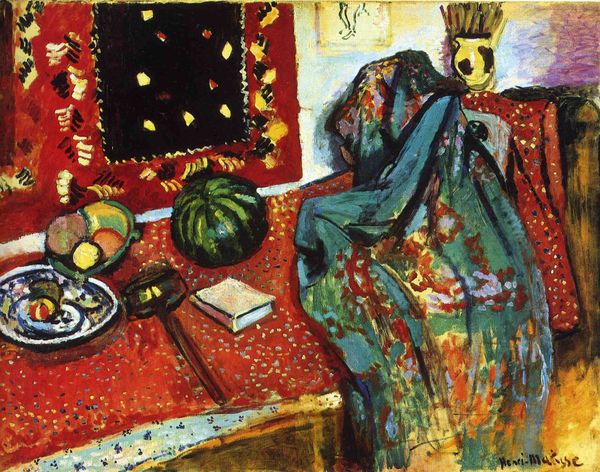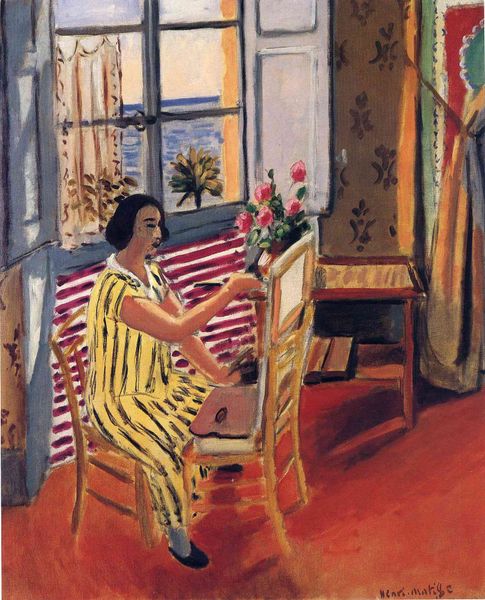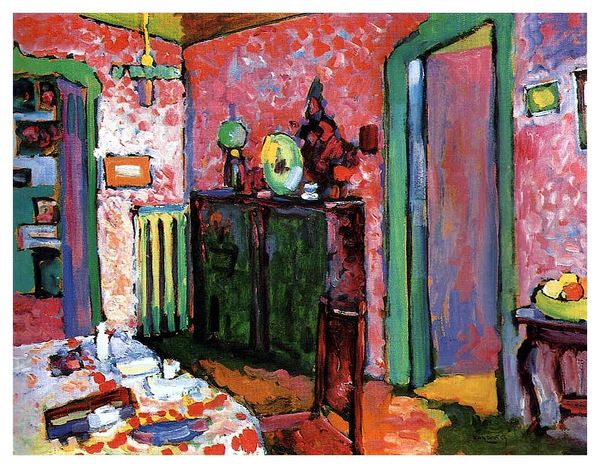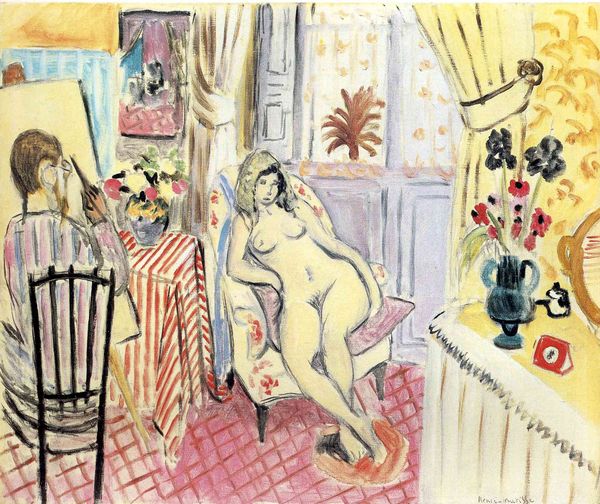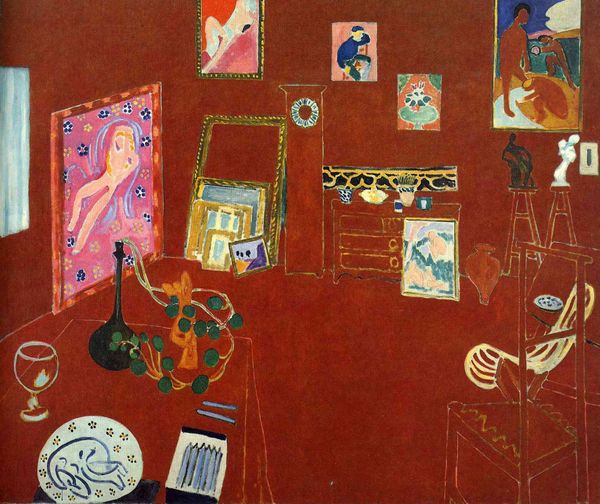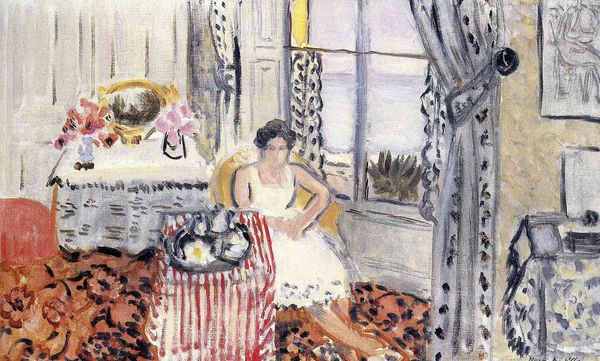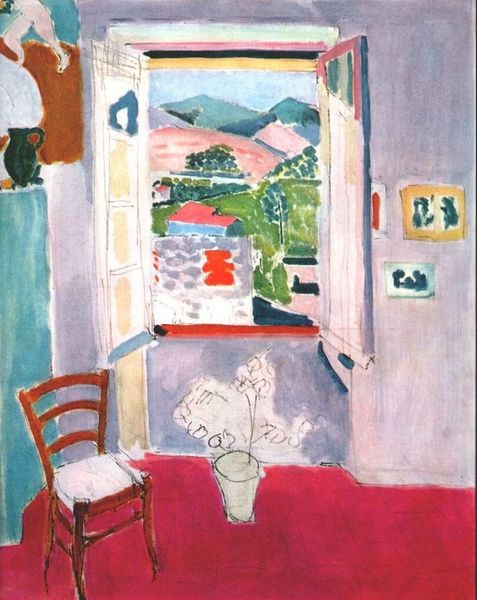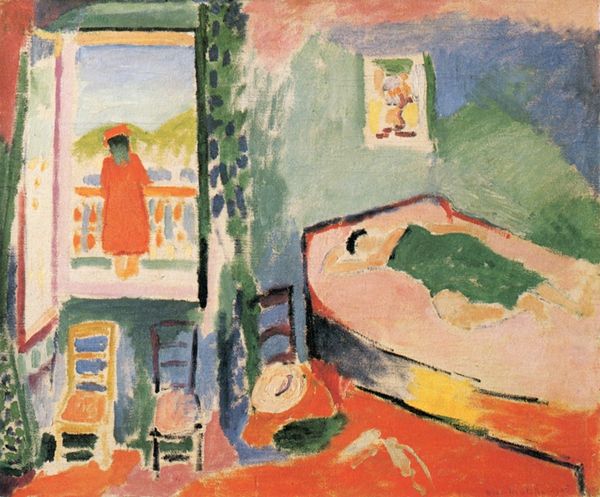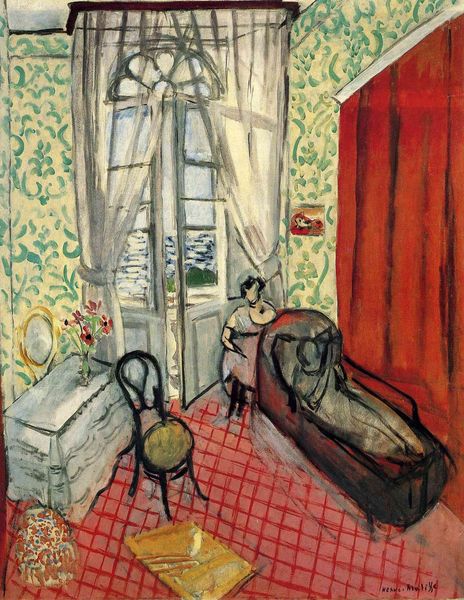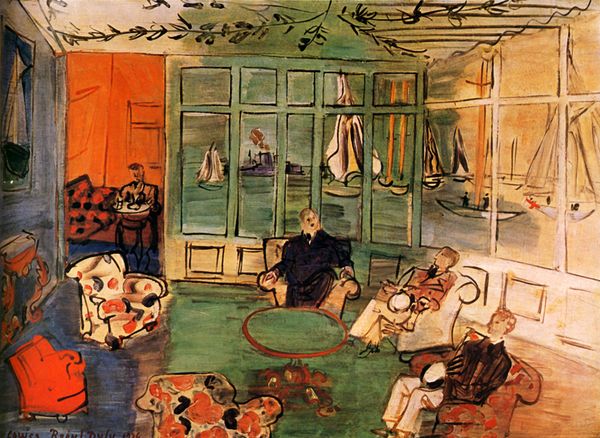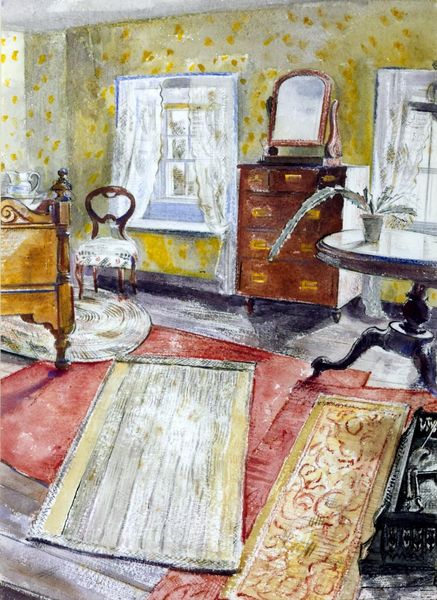
Copyright: Raoul Dufy,Fair Use
Curator: Raoul Dufy painted "Indian Model in the Studio at l'impasse Guelman" in 1928. What strikes you about this work? Editor: It's an explosion of light! A casual, almost unfinished energy permeates the scene, even in the figure. You can practically smell the oil paint. It gives the whole composition such a sense of immediacy. Curator: The layering of patterns and vibrant colors creates a unique visual language, doesn't it? I think Dufy's use of these bright colors is so interesting here; they aren't realistic at all. Editor: Absolutely, the materials become part of the subject. Notice how he applies the oil so thinly, creating a watercolor-like transparency, it's integral to the mood. Was this typical for Dufy? Curator: Yes, actually! This evokes fauvism but Dufy brings an added layer of modernity. The repeated motifs – the rugs, the canvases – also create a sense of depth and a visual rhyme within the studio. Notice the glimpse of Parisian rooftops in one painting on the wall! That use of oriental rugs carries weight considering colonialism, and how European markets handled textiles like this one in France at the time of this artwork's creation. Editor: It’s definitely worth considering the model's sari in that context. The materials are laden with economic implications. How was Dufy positioned socially in this exchange? He was of modest background but successful with dealing and exhibiting. Curator: His studio here is a sanctuary and a display, a carefully curated space reflecting his artistic persona. These symbols have their own stories of trade, consumption and artistic interpretation in France at the time, no doubt. It provides layers of complexity in this studio interior and how women of color are displayed within this context. Editor: Thinking about the context, it’s hard to unsee that labor is removed or romanticized, even made aesthetic within a certain class privilege. Curator: Agreed, this really has opened up different interpretations of Dufy for me, through those elements of the artistic process and its many cultural contexts. Editor: Indeed, a consideration of Dufy's techniques alongside the cultural milieu sheds new light on the work.
Comments
No comments
Be the first to comment and join the conversation on the ultimate creative platform.
